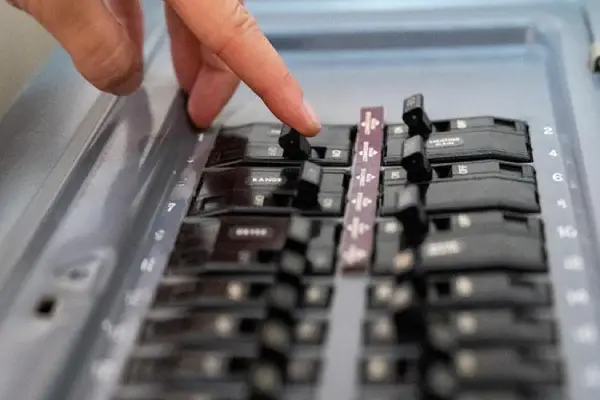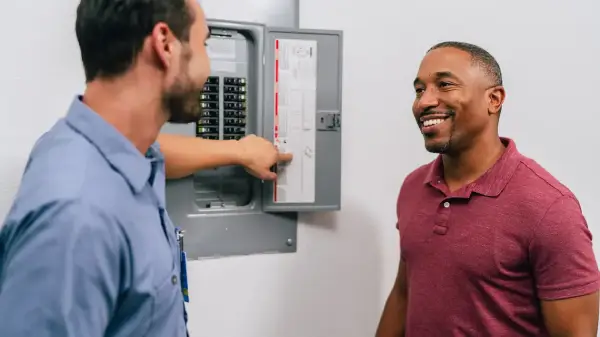
Mr. Electric experts explain how to identify a bad circuit breaker.
|
Circuit breakers can fail for multiple reasons. Most of the time it’s due to an overloaded circuit, a circuit breaker that wasn’t reset properly, or a short circuit.
When it comes down to it, circuit breakers are there to protect you from electrical faults and fires, so it’s important to know how to tell if your circuit breaker is failing.
If your circuit breaker stays broken, then it could turn from an inconvenience to a serious hazard in a matter of moments.
Is My Circuit Breaker Bad?
If you think your circuit breaker has a problem, then you should contact an electrician. But before you do, here are some steps you can take to determine if your circuit breaker is bad.
Time required: About 5–10 minutes
Materials needed: none
1. Identify the Circuit That the Breaker Is Protecting
When you first notice a problem with your circuit breaker, you need to determine which circuit the breaker is protecting. To do this, head over to your electrical panel and look for either a label next to the panel that is tripping, or a diagram on the circuit panel’s door.
The label or diagram should clearly list which circuit the breaker is protecting. If there are no labels or diagram on the electrical panel, consider labeling the circuit breakers yourself.
2. Unplug Electrical Devices from the Circuit
Once you’ve identified the circuit that’s controlled by the tripped circuit breaker, make sure the breaker is in the OFF position, and unplug all devices in the circuit. This eliminates any chance of an electrical surge or other electrical problems occurring as you complete Step 3.
3. Reset the Circuit Breaker
Once all the appliances are unplugged, you can reset the breaker by switching it back to the ON position. If you don’t hear and feel a definite click when you flip the breaker switch, the circuit breaker may have a fault.
After resetting the circuit breaker, if it doesn’t trip again immediately, then the original cause of the issue was likely an overloaded circuit. Overloaded circuits are common occurrences, and if your breaker flips when overloaded, that means it is doing its job. In particular, devices that require large surges of power (such as air fryers, space heaters, electric kettles, microwaves, and toaster ovens) can trip your breaker if used simultaneously with other devices on the same circuit. If you suspect an overloaded circuit is the culprit, move some plugs over to a different circuit, and then reset the circuit breaker again.
If the circuit breaker trips again immediately, then the problem is either a short circuit or a bad breaker.

Do I Need an Electrician to Replace a Circuit Breaker?
If you are having problems with a circuit breaker, it’s time to contact a licensed electrician. Your local Mr. Electric® will be happy to investigate and provide the necessary electrical repair or circuit breaker replacement. Get started by scheduling an appointment with Mr. Electric.
